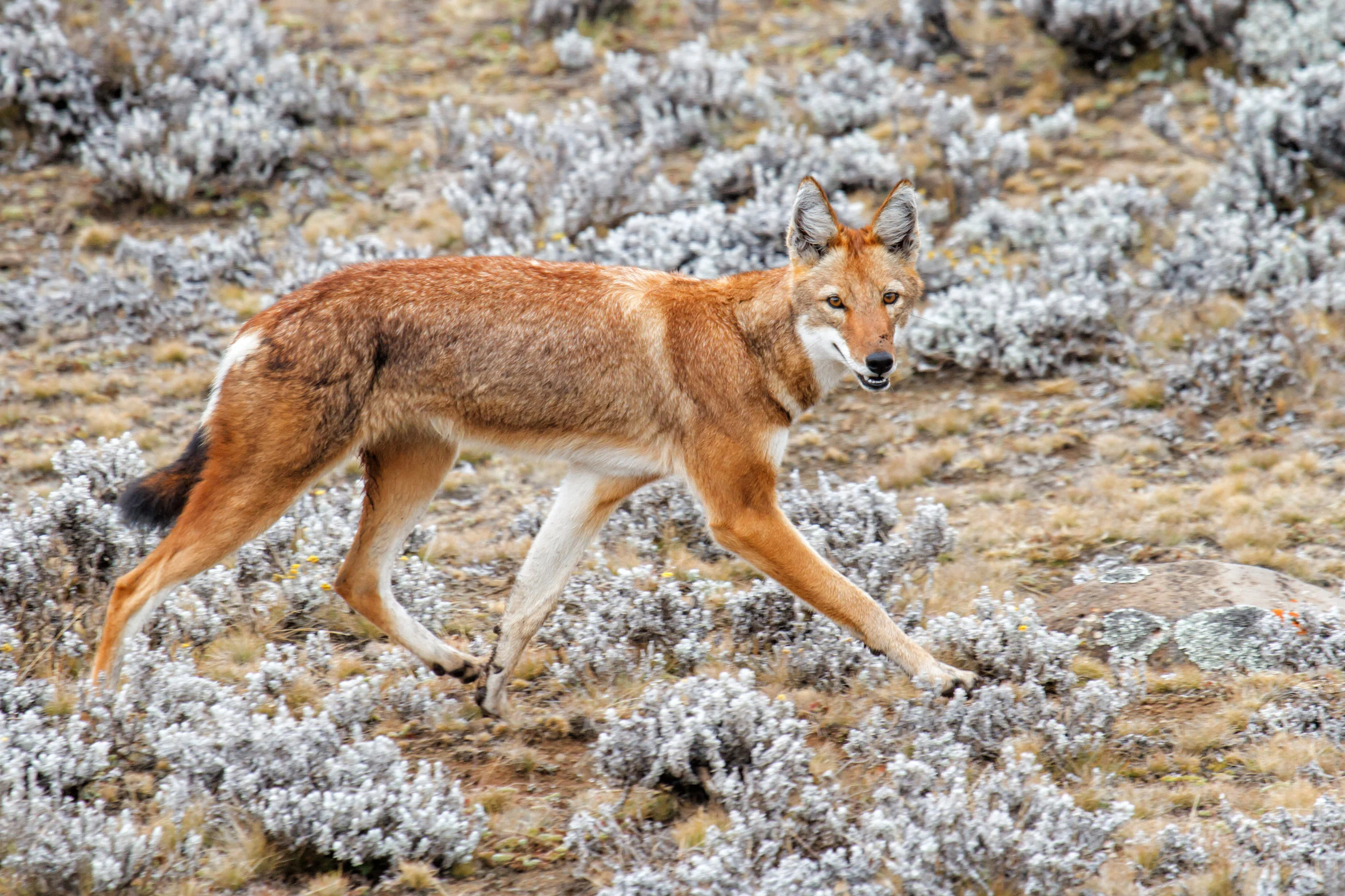Ethiopian Wolf
"I Wish You Were Here" by Kness (watercolor, permanent ink, and fountain pen)
“I wanted to draw a fox or dog or wolf because I just love their behavior. Social, affectionate, they are man’s best friends somewhere along their evolutionary path, the best hunters and great at bringing up their pups ! The Ethiopian Wolf has a unique fur pattern that I fell in love with, and reading about them made me want to know more and paint them. They feed on one rodent species, and a disease, combined with the loss of habitat makes their numbers drop dramatically.”
Your purchase is helping Expedition Art and Saving Species purchase land in Sumatra! Learn more about the project.
Habitat
These wolves are restricted to elevations between 3,000 and 4,400 meters above sea level in seven distinct pockets of the mountains of Ethiopia. They prefer afro-alpine grasslands and heatherlands, which provide good homes for their preferred prey.
Family Life
Ethiopian wolves do not often stray from their natal pack, due to overly saturated populations in the small area of their habitat. Packs number between three and 13 adults with some females moving to other packs. Mating can, and often does, occur outside of the natal pack in order to prevent the genetic consequences of inbreeding, live in territorial packs numbering between 3 and 13 adults. Mature members of the pack will patrol together at dawn and dusk to protect the pack. Ethiopian wolves are highly social and strong bonds are forged between members of any given pack.
Lifespan
Ethiopian wolves have a life expectancy of between eight and ten years in the wild. The oldest recorded individual lived to be 12 years old.
Hunting Habits/Diet
Despite the social bonds of Ethiopian wolf packs, they tend to forage and feed on their own. Primarily active during the day, they synchronize their hunting with the activity of the rodents that they prefer: giant mole-rats, grass rats and murids. They also eat goslings and eggs, and have been known to scavenge if necessary.
Population
Based on population data gathered by the IUCN, there are around 200 mature Ethiopian wolves, less than 600 total.
Fun Fact
The Ethiopian Wolf is the only wolf found in Africa and is the most vulnerable canid in the world. Subordinate females have been known to help care for and suckle the litter of the dominant female, which leaves their own pups highly compromised. They form highly tight-knit communities and the translation of their indigenous name is “trickster”.
Why are they endangered?
The Ethiopian wolf is most significantly threatened by the loss of its habitat due to human encroachment. Subsistence farming in Ethiopia’s highlands overtakes their habitats and restricts them to ever higher altitudes, which in turn become unlivable. Overgrazing of livestock exacerbates the problem. Diseases such as rabies are particularly problematic to populations in Bale, as is hybridization with domesticated dogs.
Status
Endangered


